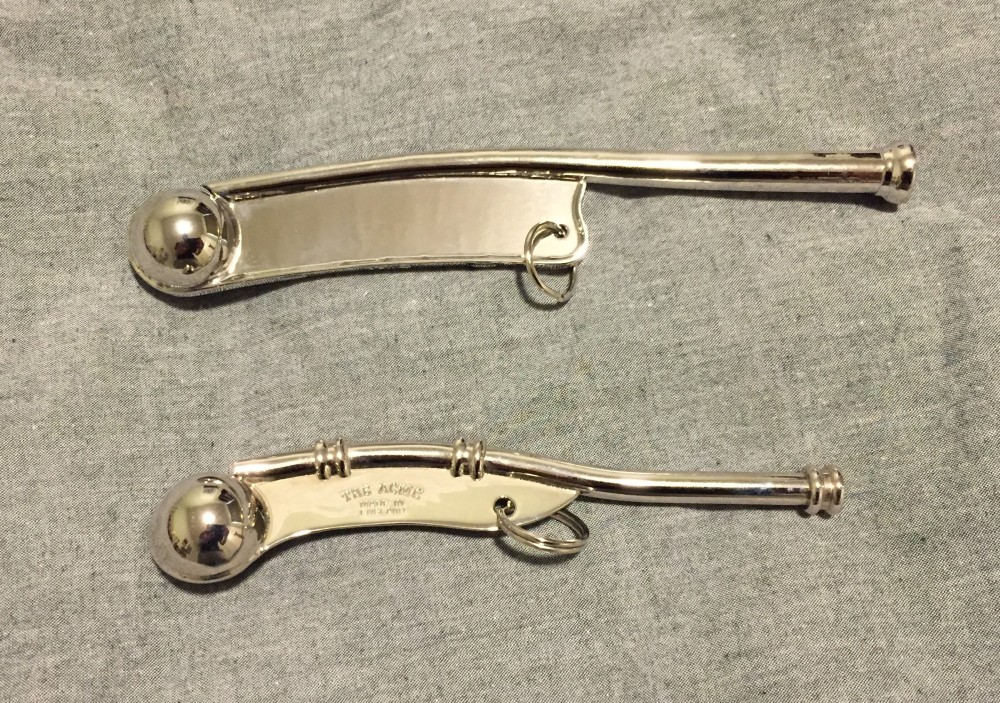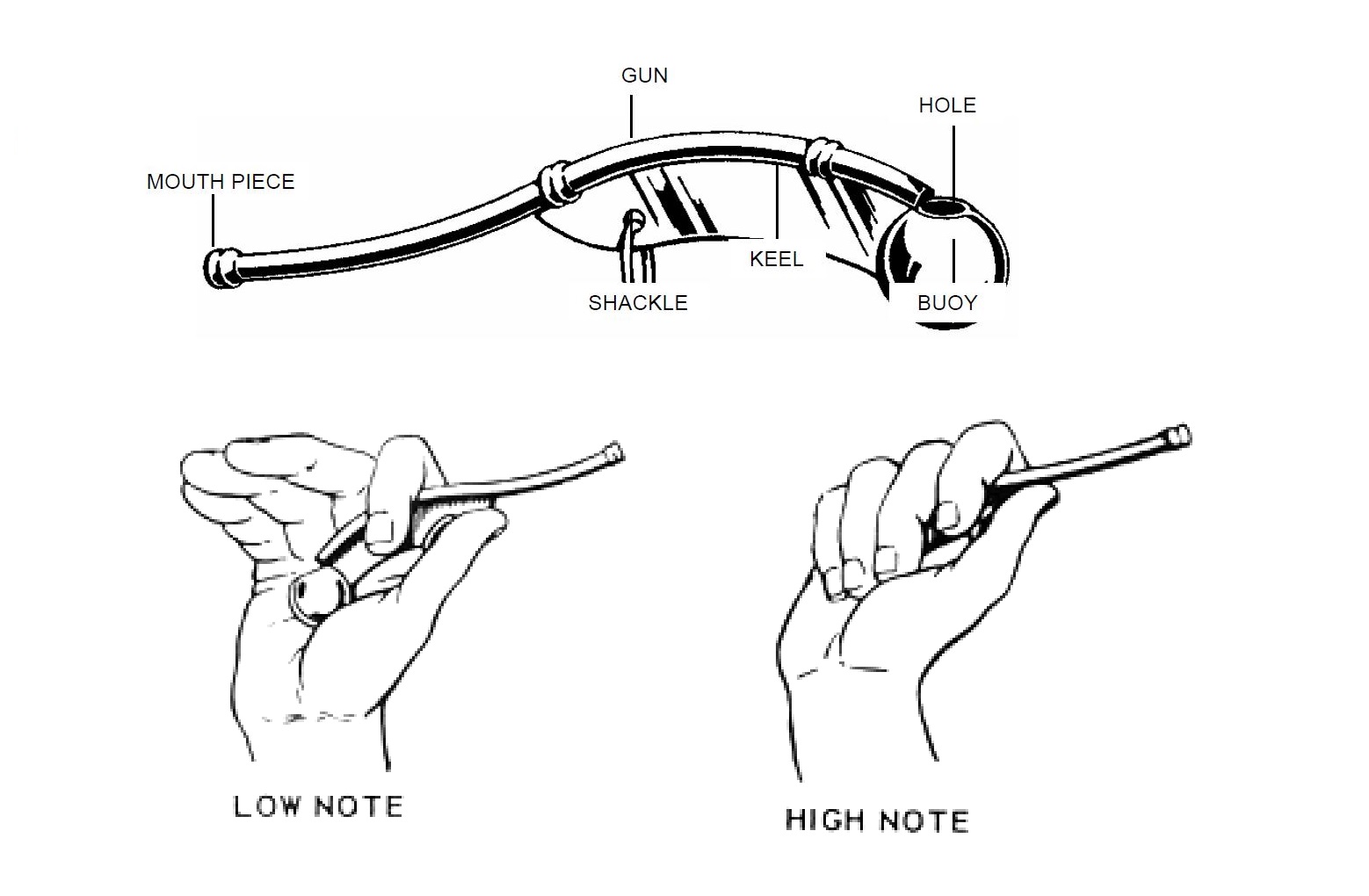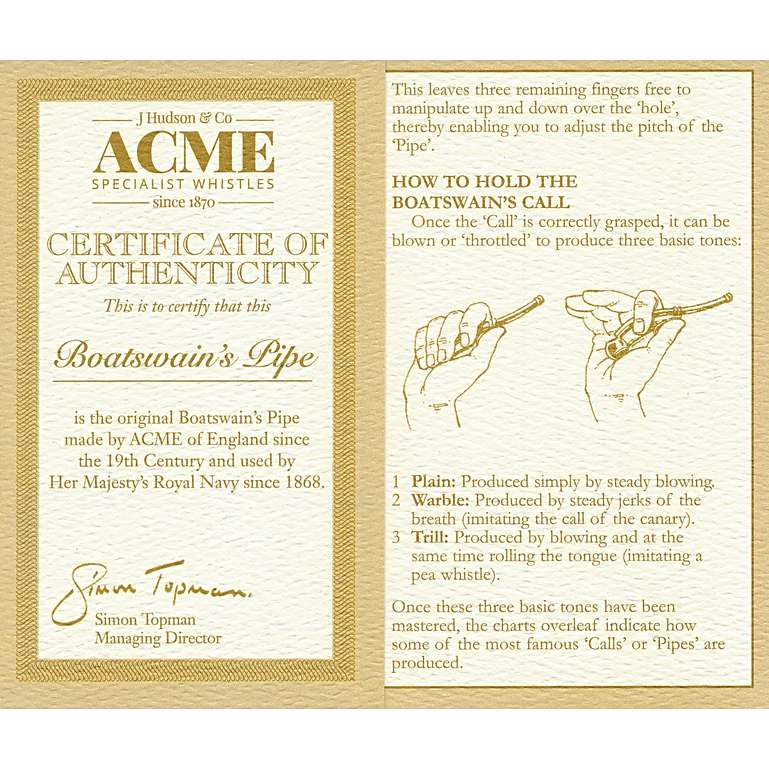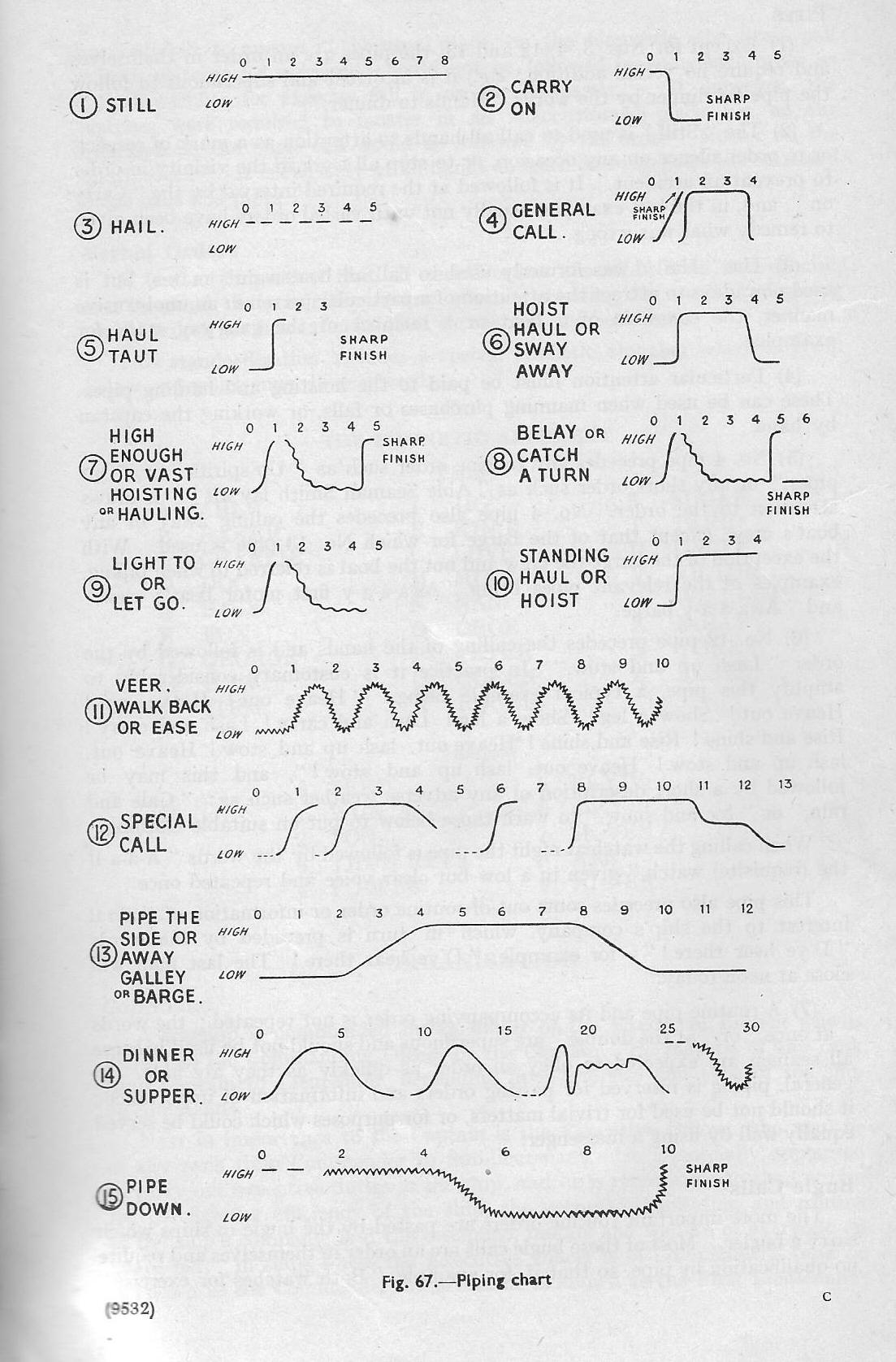
Caveat: I am not a Boatswain’s Mate. Some of the information may be incorrect, apocryphal, or vary depending on the country’s navy or sea service.
*Note: While technically a type of whistle, anecdotally I have been told that it is never referred to as such, except by landlubbers. All the salty boatswain’s mates I have met usually refer to it as a “pipe” or a “call.”
If you are a fan of nautical adventure films (like me) then you have probably seen some salty old sailor place a long piece of metal up to his mouth and produce a high-pitched whistle. So what is he doing and what is that thing he is using?
That sailor is a Boatswain’s Mate (BM) (also spelled bosun’s mate), one of the oldest naval ratings, and he is “piping” the crew. Noted for its high-pitched and shrill sound, the boatswain’s pipe, or call, is a staple of naval history.
Historical Origins
Whistles of various types have been used aboard ships since ancient Greek and Roman times. Whistles would be used aboard the galleys to coordinate the rowers and keep the rhythm. The English began using whistles aboard their vessels during the Crusades in the 13th century.
According to Lea Edgar (2019), the pipe eventually took on status as a symbol of office with the Lord High Admiral wearing a golden pipe to symbolize his rank. This practice ended in 1562. The term boatswain’s call came into use after 1671.
Traditionally, boatswain’s mates are responsible for seamanship duties such as handling lines, cables, rigging, sails, and supervising the general work of the deck department. Since the bosun would need to frequently issue orders, the boatswain’s pipe was named after him (Edgar, 2019). Supposedly, during the age of sail, the boatswain’s pipe was used because its high pitch was distinct and could easily be heard over the howl of the wind or the sound of gunfire.
Gradually, the pipe developed its own standardized set of calls that the crew would need to become familiar with and be able to respond to.
Parts of the Boatswain’s Call
As with many nautical things, every part of the pipe has an associated nautical term:

How to Play and Calls
A new pipe will often need to be tuned in order to play properly. Melted beeswax will often be poured into the buoy to alter the sound. Additionally, the wind edge of the hole will need to be shaped or filed down so that air blown through will produce a sharp noise. One way to tell is by taking a piece of straw from a broom and passing it through the gun. If the straw splits when it exits the gun and hits the far edge of the hole, then it is tuned.
Using the pipe is fairly simple, but like any instrument, it does require practice. At sea, you’ll sometimes see prospective BMs practicing their calls in their free time. Since I am in no way qualified to teach you how to play it, the following images will have to suffice.


Modern Usage
Before receiving their first pipe, the prospective BM must make their own lanyard. These are often very intricately woven and unique to each BM. It makes sense because Boatswain’s Mates have knowledge of dozens, if not hundreds, of different knots, hitches, bends, and splices. There are even different types of lanyards depending on if they are to be used in formal ceremonies or in the everyday work environment.
The usage of the Boatswain’s Call continues to this day, although largely for ceremonial purposes and as a symbol of the BM’s authority. For instance, visiting high-ranking officers and dignitaries will be announced with the call of “piping the side” (as seen in #13 in the above image) (Royal Australian Navy, n.d.).
In day-to-day usage, messages over the ship’s general announcing system (1MC) are still preceded by calls (United States Navy, 2010, p. 1-17). After hearing the shrill sound of the call numerous times a day, you will either grow fond of it or find it to be the most annoying sound in the world.
References
Edgar, L. (2019, March 18). Whistle While You Work…the History of the Bosun’s Call. Retrieved from https://bcshippingnews.ca/whistle-while-you-work-the-history-of-the-bosuns-call/
Royal Australian Navy (n.d.). History of Piping the Side. Retrieved from http://www.navy.gov.au/history/tradition/history-piping-side
United States Navy. (2010). Boatswain’s Mate NAVEDTRA 14343A. Center for Surface Combat Systems.
